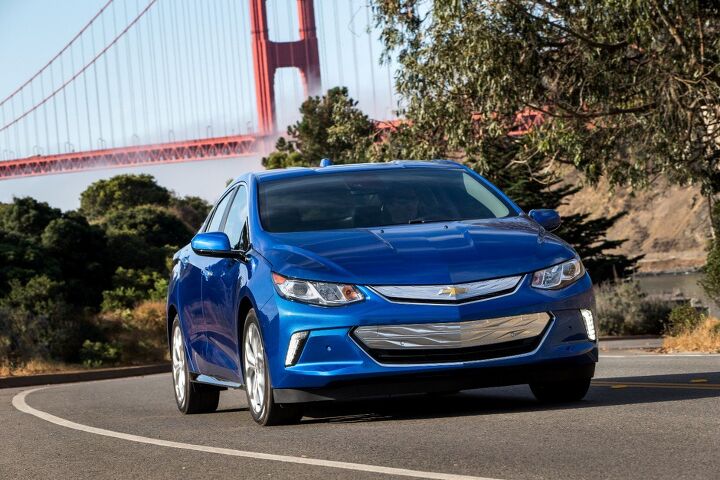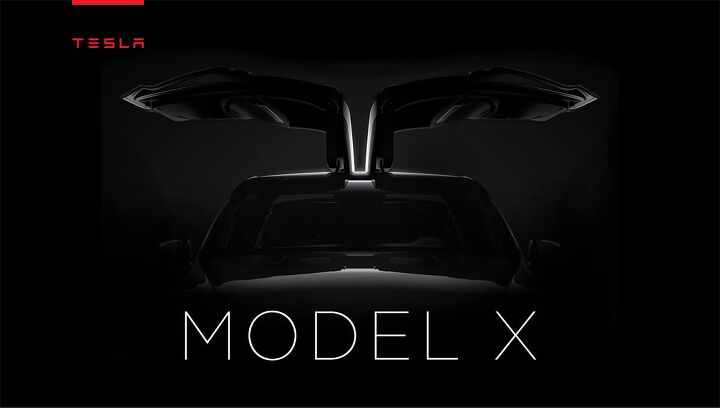#Volt
Couple Learns the Hard Way How the Future of Motoring is Paved With Discontinued Batteries
A couple’s recent experience in Florida highlighted an issue that’s bound to become more prevalent as the motoring world leans into its EV future. After experiencing some issues they took their Chevrolet Volt to a dealer in Cape Coral, Florida. It turned out the Volt had a battery issue, and it could be fixed for $29,842. Welcome to the future.
Hot Tip: Chevrolet Addresses Bolt EV Fires, Readies Recall
Chevrolet has issued a statement to owners of Bolt EVs that could be subject to surprise fires while charging, offering more tips on how to avoid burning down their homes while it preps another recall. General Motors and supplier LG Chem have identified “two rare manufacturing defects” that they believe are causing the fires and are suggesting avoid charging their vehicles in an extremely specific manner until after the secondary recall has been conducted.
Chevrolet Volt Postmortem: How Not to Market a Car With a Gasoline Engine
February 15th was a sad day, even for those who hate cars. On that day, General Motors’ Detroit-Hamtramck assembly plant produced the last Chevrolet Volt — a green car born at the dawn of a new era that didn’t take off exactly as envisioned.
In the truck-loving land of (relatively) cheap gasoline, electric vehicles are only just now eating up more than 1 percent of the market, thanks mainly to the Tesla Model 3 and what ownership of said vehicle says about your lifestyle and viewpoints. Plug-in hybrids are struggling, however, and the most famous of them all is now dead. A victim of falling sales, though your author would be curious to learn the model’s margin.
Despite offering the most practical combination of conventional gas-powered driving and electric ability, many claim the Volt’s failure was one of marketing, not engineering.
2019 Chevrolet Volt Review - An Elegy
Fully electric cars keep popping up, from startups and legacy automakers alike. They are likely the future. But I’m not ready for them, and likely neither are you.
Until nationwide infrastructure and car charging technologies allow for both a 300-mile range (typically the range of a kid’s bladder) and a 10-to-15 minute full recharge time, the internal combustion engine will always find a home in my driveway. I need the flexibility to drive across several states without plugging in.
That’s where a plug-in hybrid, like this 2019 Chevrolet Volt, makes all the difference. While it can run for over 50 miles without using gasoline, the gas engine charges the batteries, allowing for range similar to that of a traditional car. It’s the real-world way to go green.
Chevrolet Volt's Discontinuation Leaves Battery Plant Employees Out of a Job
The vehicle they provide batteries for has less than three months to live, and this week brought news to 50 workers at General Motors’ Brownstown Battery plant that their positions are even more short-lived. In a filing with the state of Michigan, GM said it will cut 37 hourly and 13 salaried workers at the Detroit-area facility, adding an extra dollop of job losses to the mass culling announced late last month.
If the idea of owning a plug-in hybrid with real electric range tickles your fancy, your time’s running out fast.
2019 Chevrolet Volt: The Overlooked 'Electric' Wants You to Plug In More Often
It’s not a pure EV, but in the early part of this decade, Chevrolet’s Volt offered one of the few mass-produced electric driving experiences on the market. Now in its second generation, GM’s “extended-range electric vehicle” — which packs a 1.5-liter gas generator — has seen its status dwindle as all-electric competitors rivals sprout like dandelions (among them, the confusingly named Chevy Bolt). Lesser plug-in hybrids abound.
Though the Volt still represents an easy-to-live-with compromise between gas-fueled convenience and emission-free commuting, GM knows it needs to do something to sweeten the pot. Extending the range beyond 53 miles seems pointless. But what if the car could charge almost 50 percent faster?
Wards 10 Best Engines For 2016 is Equal Parts Performance, Parsimonious
Three hybrid powertrains and three performance powertrains bookended Wards Auto’s top 10 engines, which was released last week.
The list included repeat winners such as the Ram 1500 Ecodiesel 3-liter six, Subaru’s turbo flat-four and Nissan’s veteran VQ 3.5-liter V-6. Appearing for the first time was BMW’s replacement for its N55 turbocharged, 3-liter straight six as well as General Motor’s LGX V-6 — which appears in several Cadillac models and in the new Chevrolet Camaro — with cylinder deactivation.
Volvo’s twin-charged 2-liter four and Ford’s famous flat-plane crank V-8 from the Shelby GT350 made the list for the first time in 2016. Volkswagen’s engines were excluded from consideration this year because of the company’s admission that its diesel engine cheated through emissions tests.
General Motors Scaling Back Sonic Production, Moving 500 Workers
General Motors will lay off around 500 workers and eliminate one shift at its Orion Assembly due to sagging demand for small cars, the automaker announced Friday. Those workers may be sent to a nearby plant.
Automotive News first reported on the layoffs.
According to a statement from a GM spokesman, the automaker will “adjust plant production capacity to align with market demand” and eliminate one shift that builds the Sonic. Demand for the Sonic has largely remained flat since the subcompact’s introduction in 2011.
General Motors Adding More Workers To Volt Plant
General Motors announced Thursday that it would add a second shift to a flexible Detroit plant to prepare for upcoming demand for its cars.
GM will add roughly 1,200 jobs to Detroit-Hamtramck this year to help it build new models, the automaker said in a statement. The plant builds the Chevrolet Volt, Impala and Malibu and the Cadillac ELR there on a single production line. Production of the Cadillac CT6 will start there in early 2016.
General Motors: Don't Read Into Autonomous Vehicle Announcement
General Motors announced last week that it would develop a fleet of autonomous Volts for its Warren, Michigan campus by 2017, despite announcing earlier in the year that its struggling Oshawa, Ontario facility would be a hub for connected vehicles in April.
GM spokesman Dan Flores said the Warren campus was the best fit for the self-driving Volts that will shuttle GM employees.
“We have several global engineering centers in the world and they all play a role in development,” he said. “There shouldn’t be anything read into the autonomous center being based in Warren. It’s the company’s main technical center.”
Pumped About The 2016 Chevrolet Volt? Not So Fast
The 2016 Chevrolet Volt won’t be released nationwide this year, General Motors told Autoblog after purported pictures of a delivery timeline showed that only 11 states would receive the 2016 model year were published by HybridCars.
Only 11 states: California, Connecticut, Massachusetts, Maryland, Maine, New Hampshire, New Jersey, New York, Oregon, Rhode Island and Vermont, will see the 2016 car, according to the document. Dealers in California have already begun accepting orders for the car.
Prospective buyers in the 39 other states (presumably Puerto Rico and Guam, too) will have to wait until next year to get their cars.
QOTD: Why Hasn't Anyone Out-Gas Mileaged The Prius?
Fifty-one miles per gallon city. Forty-eight miles per gallon highway. Still the best numbers in the industry for nearly a decade now.
Yes, ladies and gentlemen, I’m referring to the Toyota Prius, which is a 5-door hatchback that looks a bit like an egg mated with a shopping cart. It’s been a decade since the Prius came out in hatchback form, and a decade since it achieved those impressive fuel economy figures: 51 miles per gallon city. 48 miles per gallon highway. And still, no one has unseated the Prius.
Battery Tech - Not Better Range - Is Why We Should Be Excited About Chevrolet Volt
Chevrolet announced Tuesday that its new 2016 Volt would extend its all-electric range from 38 miles to 53 miles, which is a 40-percent improvement and would satisfy more than 90 percent of normal drives.
The feat itself would put the Volt on par with many all-electric commuters, whose normal range is anywhere from 60 to 90 miles. Of course, the Volt packs with it a 1.5-liter turbocharged four cylinder that bumps that range up to more than 400 miles, but that’s neither here nor there.
Let’s talk about the batteries.
Sales of EVs, Hybrids Slumping After Gas Prices Dip
Sales figures from automakers this week show slumping sales of electric vehicles and hybrids nationwide as gas prices drop and tax incentives dry up.
According to the Detroit News, sales from EV makers such as Nissan and Chevrolet have slowed down significantly — more than 30 percent for the Volt and 12 percent for the Leaf — last month, and both models may end up down significantly for the sales year.
Used Tesla Values Could Be a Bubble Waiting to Burst
The National Automobile Dealers Association new electric vehicle retention list released last week has a tasty little tidbit in its roundup of value retention rates.
Tesla’s Model S, which topped the 3-year value retention rate list for EVs in the new list, also sported a better value rate for most cars on a similar list released last year for all segments, including mid-size luxury cars. That includes BMW.
But the news may not be all good, all the time.

























Recent Comments